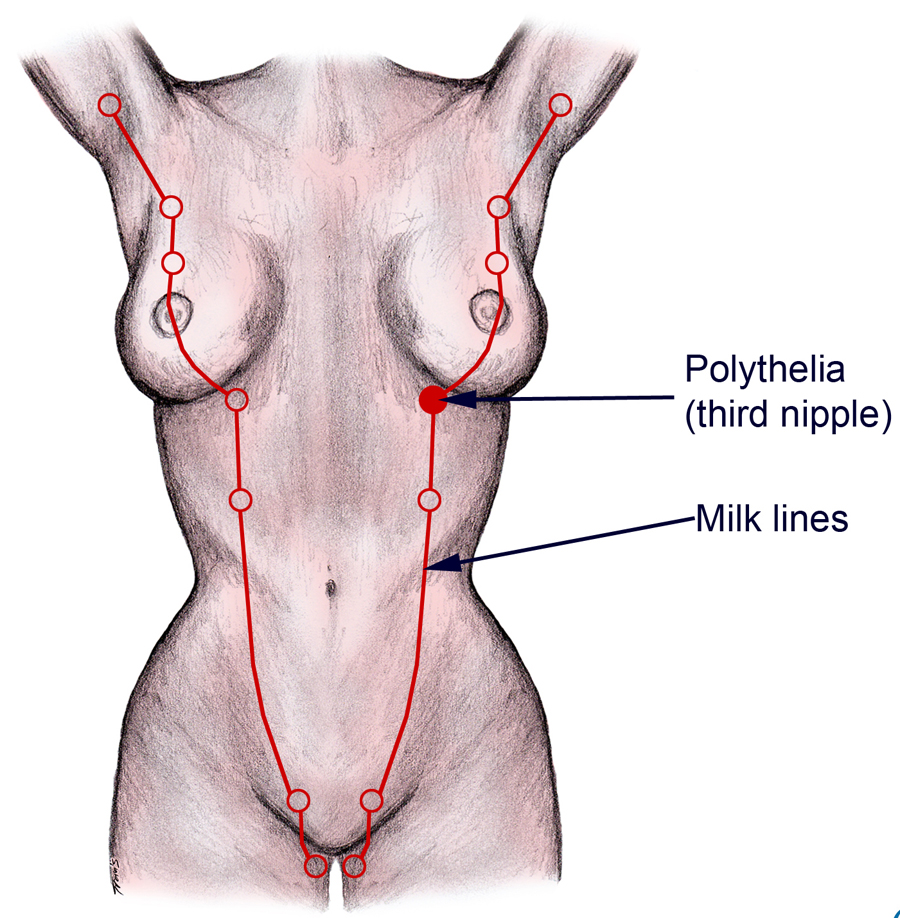Breast feeding can be difficult for many new mums, but it could be argued that a 29-year-old in Austria had it much worse.
It wasn't just her breasts that were swelling, sore, and producing milk – it was also her vulva.
The doctors at the Obstetrics and Gynecologic Endocrinology section of the Kepler University Hospital in Austria saw the woman only five days after her second baby was born.
She had been transferred into their care because of complaints about swelling and pain in her vulva. There was some tearing during the recent birth, and she had received two sets of stitches in two different parts of the sensitive area.
"At the time of transfer, that patient reported that, on postpartum day four, she developed discharge of a milky white fluid bilaterally on the vulva," the team explains.
"She noticed a rising swelling on both sides, right and left, reaching from the labia majora to the labia minora and extending as far as the perineal area close to the anus within 4 days after delivery."
The first thought was that something was amiss with the stitches; but the woman noted to the doctors that she'd had similar symptoms after her first pregnancy.
Taking all this into account, the medical team realised their patient had what's known as ectopic (not in the usual location) breast tissue, right there in her external genitals. An ultrasound confirmed the diagnosis.
And, although there was no nipple, there was a duct - and it was excreting milk.
This might sound like a totally bizarre situation, but it can be explained quite easily when we take a detailed look at the development of human breasts; they can be a lot more complicated than we think.
Humans - like all other mammals - have something called an embryonic milk line or mammary ridge. When we're still tiny embryos, this is the area our bodies will form nipples on; in some of us, it's along this line that we'll also form mammary glands and breast tissue during puberty.
 (The Geneva Foundation for Medical Education and Research/CC BY 3.0)
(The Geneva Foundation for Medical Education and Research/CC BY 3.0)But here's the thing: Nipples and breast tissue can actually form anywhere along those milk lines; this is what causes things like third (or more) nipples along the milk lines, or in this case, breast tissue on the vulva.
Such a phenomenon is rare, but it's not unheard of; a quick glance will reveal several other cases in the literature.
However, most of the time this ectopic breast tissue is not discovered until it starts showing problems, such as swelling up in pregnancy or developing a cancerous tumour. To treat such cancer cases, the tumour and the breast tissue is removed, usually resolving the problem.
When it comes to the Austrian mum, it appeared that some of the stitches on one side had caused galactostasis, where milk gets backed up to a painful degree. To treat this, the doctors removed the stitches from the ectopic breast tissue, and gave the patient antibiotics to treat inflammation.
Thankfully, the pain, swelling and milk discharge from the vulva slowed over the next two weeks, and the woman was able to continue breast feeding without any other issues.
The researchers explain that she hasn't had the breast tissue removed, although they have discussed potential issues with tumours in the future.
"Owing to the potential for malignancy developing in ectopic breast tissue, it seems prudent to recommend excision of this tissue, even though there are no guidelines for management of extramammary breast tissue," the team explain
"Diagnosis is important to differentiate from other vulvar masses, such as vulvar carcinoma, and to guide correct management."
The research has been published in Obstetrics & Gynecology.
